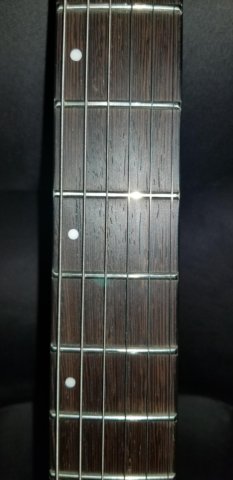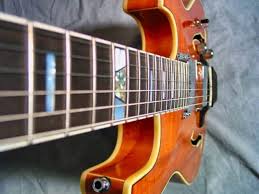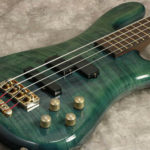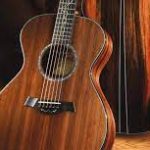Learning The Notes On The Neck
When learning how to play guitar, one of the biggest obstacles many beginners face is learning all of the notes on the fretboard.
Open-String Notes
To begin, let’s take a look at the notes on the open-strings of the guitar. This might be new for some of you, and review for others, but having a strong understanding of the open-string notes will make learning the notes on the rest of the neck much easier when you are ready to move in that direction.
If you are new to the notes of the open strings, make sure to memorize them before moving on to the next sections of this lesson, as it will make moving forward much easier than if you are still working on learning these notes.

Notice that none of the notes have #’s or b’s on the open strings.
C Major Scale
Here are the notes in the C major scale, C D E F G A B C, presented in a one-octave scale fingering in open position.

After playing through this fingering to get the shape of the scale under your fingers, and the sound of the scale in your ears, try playing the scale and saying each note out loud as you do.
This will begin to create a connection between the sounds you are hearing from the guitar, the notes you are seeing on the fretboard, and the names of the notes themselves.

Low E-String Notes
We will begin by playing and learning the notes of C major on the low 6-string.
Here, you are starting on the note E, the open string, and playing all the notes from C major, E F G A B C D E, on that one string.

Saying the notes out loud is a great way to memorize these notes on the 6th string, and get the notes of the C major scale internalized at the same time.
When you have these notes memorized and can play them while saying each note without making any mistakes, then it’s time to move on to the A string and repeat the same exercise.
A-String Notes
ou can now repeat the same process, playing the notes of C major scale and saying them out loud, on the 5th-string of the guitar.

When you’ve got these notes memorized, you’re ready to move onto the 4th string notes.
D-String Notes
Here are the notes on the 4th string, starting on D and working up to the D on the 12th-fret, for you to play and say out loud in order to memorize their positions on the fretboard.

G-String Notes
If you have learned barre chords you are used to seeing notes on the lower 2-3 strings as roots for the chords you are playing at the time, but may be less familiar with the notes on the 3rd string and higher.
So, take your time with this string and really get these notes down, testing yourself to make sure you know them, before moving on to the top two-strings of the guitar.

B-String Notes
this string is usually less familiar to most guitarists than the lower two or three strings, so take your time and make sure you have these notes down before moving to the last string in this exercise.

Saying the notes out loud is a great way to memorize these notes on the 6th string, and get the notes of the C major scale internalized at the same time.
When you have these notes memorized and can play them while saying each note without making any mistakes, then it’s time to move on to the A string and repeat the same exercise.
High E-String Notes
The last string is usually an easier string to learn the notes on, since it has all the same notes in the same order and position as the low-E string which you’re already learned.
Here are the notes of the C major scale, no sharps or flats, on the high-E string for you to practice playing and saying out loud.


Technical Exercises to Learn Notes

1. Play the notes on each string from the lowest notes to the highest notes on each string, saying the names of each note as you play them.
2. Play the notes on each string from the highest notes to the lowest notes, saying the names of each note as you play them.
3. Play up the 6th-string notes, then down the 5th-string notes, saying the notes as you play them. Continue this exercise up and down every second string, so up 6-down 5, up 4-down 3, up 2-down 1.
4. Repeat this last exercise but reverse the order, so play down 6-up 5 etc.
5. Test yourself by picking a random note from the C major scale, such as F, and then playing it on each string in a row, so 1st fret 6th string, 8th fret 5th string, 3rd fret 4th string and so on.
Improvisational Exercises to Learn Notes
1. Put on a C chord backing track, or a backing track in the key of C major such as C-F-G, or Am-G-F, and solo using only the notes on the E string.
2. Repeat this exercise using only the notes on the 5th string, then only on the 4th string and so on until you cover all six strings.
3. Using the same or similar backing track, solo using a random pair of strings, such as only using the notes of C major on the 4th and 2nd strings to create your solo.
4. Repeat this last exercise with as many different string combinations as you can think of for two strings on the guitar.
5. Solo on any/all strings using only the notes of the C major scale, saying the notes and/or singing the notes as you play.

Learning the notes on the neck is an important skill for any guitarist to have, but it often seems like a daunting and boring task.
By working on 1 string at a time, and incorporating the technical and improvisational exercises listed above into your practice routine, you’ll be able to learn all the “normal” notes on the neck, (no sharps or flats), without becoming bored or frustrated in the practice room.

Guitar & Gear Articles




